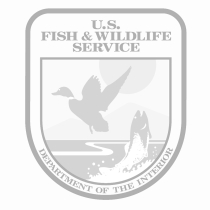Location
States
ArizonaIntroduction
The 8,000-acre Appleton-Whittell Research Ranch (AWRR) is located in the semi-arid grasslands within the Sky Islands of Southeastern Arizona. Since 1968, when the Appleton family converted their cattle operation into an ecological research station and sanctuary for native biota, the Research Ranch has protected Southwestern ecosystems through conservation, research, and education.
AWRR is managed by the National Audubon Society as a partnership among U.S. Forest Service, Bureau of Land Management, The Nature Conservancy, Swift Current Land & Cattle Co., and The Research Ranch Foundation.
Key Issues Addressed
Boer and Lehmann lovegrasses were introduced into the region as range improvements in the mid-twentieth century. Subsequent studies have shown these South African species provide lower quality forage and areas dominated by these species support fewer native plants and animals than native grasslands. Although native vegetation predominates on most of AWRR, the rapid spread of these non-native species threatens the Ranch’s mission. Lehmann lovegrass can become the dominant species (>50% frequency) in a healthy, undisturbed native grassland in as little as six years. Boer lovegrass does not spread as rapidly, but once established is more effective than Lehmann in excluding native species. AWRR staff began experimenting with treatments of lovegrass in the late-1990s to discover effective methods to protect and rehabilitate native grasslands.
Project Goals
- Protect native habitat to serve as reference site for research and source of native, site-adapted seed for rehabilitation efforts
- Develop treatments to control the spread of non-native, invasive grasses
- Share methodology and results with other land managers
Project Highlights
- Finding a Method: Control efforts included use of fire, mowing, chemical, physical removal, alteration of the carbon-nitrogen ratio, and grazing by domestic livestock. Of these, only chemical treatment (glyphosate + colorant + surfactant) has been effective.
- Successful Treatments: In two years, the frequency of Lehmann lovegrass was reduced from 70% to 10%. Both target species respond to chemical treatment, but repeated treatment throughout the growing season and a commitment to long-term treatment is necessary for sustained success.
- Native plants respond: Careful adherence to Individual Plant Treatment (IPT) ensures there is no collateral damage to desired plants, which undergo competitive release when the frequency of non-natives is reduced. If non-natives are controlled using IPT, rehabilitation of native plants does not require additional seeding in areas where native plants are present at 30-60% frequency.
- Wildlife Returns: Native animals also respond positively to reduction in frequency of non-native plants--reptiles, grassland birds and small mammals quickly capitalized on the improvement in habitat.
Lessons Learned
“When a neighboring rancher asks ‘How did you do that?’ you must be doing something right.” -Linda Kennedy AWRR Director
- Long-term success of treatments requires continuous management efforts. Non-natives will quickly reclaim a site if the land-manager does not regularly monitor and re-treat as necessary. The seed bank of both target species is persistent for several years, and new seed is introduced from untreated areas via wind and roads.
- Repeated passes through the treatment areas are necessary throughout each growing season as Lehmann lovegrass, especially, can germinate and produce seed very rapidly.
- Areas in which the frequency of non-natives is low can be maintained relatively inexpensively with IPT compared to areas in which non-natives have already become dominant.
- Treatment schedules must vary according to weather and precipitation patterns. In spring, Lehmann lovegrass is susceptible to chemical treatment only if there is sufficient soil moisture to facilitate green-up. Prime treatment time is during monsoon, when plants are susceptible to chemical treatment and easily identified.
- An irregular work schedule due to weather constraints associated with herbicide application posed a significant challenge in recruiting and training diligent volunteer chemical applicators at the remote Research Ranch.
Next Steps
- Expand treatment into an area where Lehmann lovegrass dominance reaches 90%
- Continue maintenance level effort on previously treated areas
- Use long-term monitoring to show efficacy of treatments
- Harvest native seed from continuously maintained areas to use in rehabilitation efforts if necessary
Funding Partners
- Arizona Department of Forestry and Fire Management (Previously Arizona State Forestry Division)
Resources
Contact
- Audubon Research Ranch,Researchranch@audubon.org
Case Study Lead Author
- Ashlee Simpson, CART Graduate Research Assistant, University of Arizona
Suggested Citation
Simpson, A. C. (2018). “Treatment of Non-Native Lovegrasses at Appleton-Whittell Research Ranch.” CART. Retrieved from https://www.fws.gov/project/treatment-non-native-lovegrasses.





